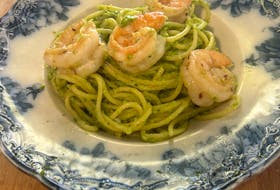Since moving into my own home, I’ve been trying to be more creative with foods (I know, this is not new news). But for a picky eater who prefers generally bland foods, expanding my palate to include curry, cardamom and other spices has not been easy — heck, up until recently, I didn’t even like tacos (don’t worry, that’s changed).
One of the first things I bought to go in my kitchen was a spice rack. I’d heard of most of the spices but had never really used them before. So, when I started making meals — pork chops, various sauces, fish, etc. — I vowed to try a new spice each time.
But I have acquired a few staples, so foodie friends, here are some must-haves to keep in your cupboards, spice racks or flavour savours to add to your next grocery list (please note I’ve included their scientific names in case you want to try your hand at growing the spices and want their proper names).
Sage (Salvia officinalis)
Before I started cooking pork chops for myself, I had never tried sage before. Now it’s my go-to. Sage is a member of the mint family and high in antioxidants and may help support oral health, aid brain function and lower blood sugar and cholesterol levels. It doesn’t have an overpowering taste, but you’ll know it’s there and will complement other tastes when you use it. It’s best used in dishes like pork chops, fatty meats, chicken and soups.
Garlic (Allium sativum)
I am a garlic FIEND. I love everything garlic. And if you’re not using it in your cooking, we may have a problem. Garlic is a relative of the onion, and has a strong, punchy flavour (and smell). Garlic is believed to help prevent or reduce the severity of the cold and flu, is good for your heart and can reduce blood pressure. It’s a staple in my pasta sauces (carbonara, Bolognese and 50-50). It’s great for steak, lobster (I’m just guessing here), pasta dishes, grilled cheese, potatoes and more (let’s be real — it’s great in anything).
Thyme (Thymus vulgaris)
This is another spice I like to incorporate in pork dishes. Thyme, like sage, is a member of the mint family and has a soft smell. Through history, thyme has had dietary, medicinal and ornamental uses. It’s been used to treat diarrhea, stomach ache, arthritis, and sore throat. Best dishes include meats (pork and chicken, turkey), fish, pizza sauces, potatoes/fries, salad dishes, and vinaigrettes.
Rosemary (Rosmarinus officinalis)
Rosemary is a woody herb with a sweet flavour. The needle-like leaves add great flavour and texture to seasoning groups for various dishes. Also part of the mint family, it has been credited to help boost memory, improve mood, and lower the risk of Alzheimers and cancer. It’s great for seasoning poultry, stews, soups, lamb and pork.

Chili powder
This is ground up chilis with the addition of other spices. To make your own, whisk together oregano, cumin, garlic powder, onion powder, and cayenne pepper. The sweet taste will come from the paprika while the others partner together to pack a bit of bunch. It’s believed that chili powder helps with eye health, formation of red blood cells, and aids the digestive system. It’s delicious in pasta dishes, taco/nacho/fajita options, steaks, and other red meats.
Nutmeg (Myristica fragrans) and cinnamon (Cinnamomum)
Both these pungent spices make for delicious warm drinks, baked goods, and other warm, comfort food dishes. Health benefits of cinnamon claim to include lowering cholesterol, antimicrobial properties, anti-inflammatory properties and more. Nutmeg can help with diarrhea, nausea, stomach spasms and pain, and intestinal gas. Both make for great additions to cookies, cakes, oatmeal dishes, pies, and crumbles and teas.
Bay leaves (Laurus nobilis, Lauraceae) and summer savoury (Satureja hortensis)
I’ve partnered these two together because I often use them in the same dishes — chicken, soups, pasta sauces. Both are savoury spices that can add a lot to a dish. Summer savoury is believed to help coughs, sore throats, and intestinal issues while bay leaves are rich in vitamin A and C, iron, potassium, calcium and magnesium. They are great in poultry dishes, spaghetti sauces, stuffings, and soups.
Italian seasonings
I’m talking a team up here — basil, marjoram, oregano (plus a few others already mentioned) — this blend is important to have on hand any time you’re making sauces, dishes, pizzas and more. The team contains powerful antioxidants, anti-inflammatory properties, reduces viral infections and supports heart health.
So, friends, there you have it. Great spices to have on hand when you’re in the kitchen. And while I haven’t used all of the spices on my rack just yet — I must admit that I like what I like, but the challenge has been accepted and I’m determined to spice up my life (for those of you who don’t know, that’s a Spice Girls reference).
MORE MILLENIAL HOMEMAKER
- Something about salmon
- A picky eater takes on corned beef; can you guess how that worked out?
- Recreating memories from family cookbooks
- Try monthly meal planning to reduce waste, spending
Millicent McKay is a millennial homemaker, tea drinker, journalist and blogger for theonewithpaigeandmillee.squarespace.com/. For more check out her weekly blog posts and follow her on Instagram.









